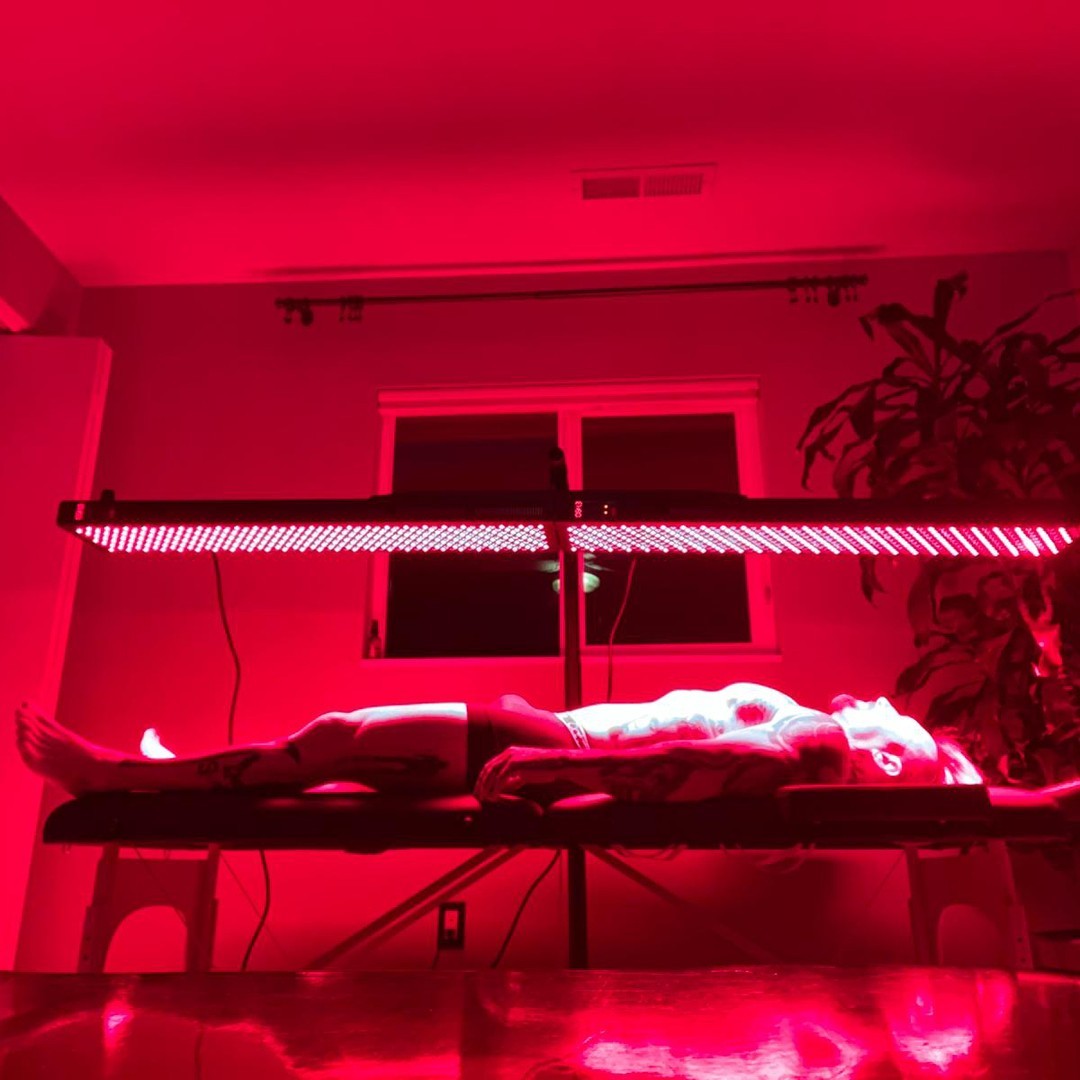![]() Free Shipping
Free Shipping ![]() Buy Now, Pay Later
Buy Now, Pay Later ![]() Eligible
Eligible
Is Red Light Therapy the Key to Building Disc Pain Relief?

Chronic back pain, particularly disc-related pain (such as herniated or degenerative disc disease), can be debilitating. Many sufferers cycle through treatments—painkillers, physical therapy, steroid injections, and even surgery—only to find temporary relief. But what if a non-invasive, drug-free solution could help repair damaged discs and reduce inflammation?
Enter red light therapy (RLT), a promising treatment gaining traction in pain management and tissue repair. But is it truly effective for disc pain? Let’s explore the science, benefits, and real-world applications of red light therapy for spinal disc relief.
Understanding Disc Pain: Why It’s So Hard to Treat
Spinal discs act as shock absorbers between vertebrae. When they degenerate, herniate, or become inflamed, they press on nerves, causing pain, stiffness, and reduced mobility. Traditional treatments often focus on masking symptoms rather than healing the disc itself because:
- Discs have poor blood supply, making natural healing slow.
- Inflammation is persistent, leading to chronic pain.
- Surgery is risky, with long recovery times and mixed results.
This is where red light therapy offers a unique advantage—by stimulating cellular repair and reducing inflammation at the source.
How Red Light Therapy Works for Disc Repair
Red light therapy, also called low-level laser therapy (LLLT) or photobiomodulation, uses specific wavelengths of red and near-infrared (NIR) light to penetrate deep into tissues. The light energy is absorbed by cells, triggering biological processes that aid healing.
Key Mechanisms for Disc Pain Relief:
- Reduces Inflammation
- Light therapy decreases pro-inflammatory cytokines (like TNF-α and IL-6) while increasing anti-inflammatory signals.
- Studies show it can reduce nerve root inflammation, a major cause of sciatica and disc pain.
- Stimulates Collagen & Tissue Repair
- Discs are made of collagen, which breaks down with age or injury.
- RLT boosts fibroblast activity, helping rebuild disc structure.
- Enhances Cellular Energy (ATP Production)
- Mitochondria absorb light photons, increasing ATP (energy) production.
- More energy means faster healing for damaged disc cells.
- Improves Blood Flow & Oxygenation
- Light therapy promotes vasodilation, bringing more nutrients to the damaged area.
- Better circulation helps remove waste products that contribute to pain.
- Pain Modulation
- RLT may reduce nerve sensitivity and block pain signals.
- A 2014 study in Lasers in Medical Science found LLLT significantly reduced chronic lower back pain.
Scientific Evidence: Does Red Light Therapy Help Discs Heal?
Several studies support RLT’s role in disc repair and pain relief:
- A 2017 study (Photomedicine and Laser Surgery) found that NIR light reduced disc degeneration in rats by promoting cell proliferation and reducing oxidative stress.
- A 2009 clinical trial (European Journal of Physical and Rehabilitation Medicine) showed that LLLT provided long-term pain relief for chronic back pain sufferers compared to placebo.
- A 2020 review (Journal of Pain Research) concluded that photobiomodulation is effective for musculoskeletal pain, including discogenic pain.
While more human trials are needed, the existing data suggests RLT can be a valuable tool in managing and potentially reversing disc damage.
VELLGUS Elite V2
THE #1 RATED RED LIGHT DEVICE
VELLGUS pro V2
THE #1 RATED FULL BODY RED LIGHT DEVICE
How to Use Red Light Therapy for Disc Pain
If you’re considering RLT for disc pain, here’s how to maximize benefits:
1. Choose the Right Device
- Wavelength: 660nm (red) for superficial layers, 850nm (NIR) for deep penetration (ideal for discs).
- Power Output: Higher irradiance (mW/cm²) means shorter treatment times.
- FDA-Cleared Devices: Look for medically approved panels or handheld devices.
2. Treatment Protocol
- Duration: 10-20 minutes per session, 3-5 times per week.
- Positioning: Apply light directly to the spine where the damaged disc is located.
- Consistency: Results build over weeks; expect noticeable improvement in 4-8 weeks.
3. Combine with Other Therapies
- Physical Therapy: Strengthens supporting muscles.
- Chiropractic Care: Ensures proper spinal alignment.
- Anti-Inflammatory Diet: Supports tissue repair.
Real-World Success Stories
Many users report significant pain reduction and improved mobility after consistent RLT use:
- John, 52 (Herniated L4-L5 Disc): *”After 6 weeks of daily red light therapy, my sciatica pain dropped from an 8/10 to a 2/10. I could finally sleep through the night.”*
- Sarah, 45 (Degenerative Disc Disease): “Combining red light with yoga gave me back my flexibility. I’m off pain meds for the first time in years.”
While results vary, the trend is clear—RLT offers a safe, non-invasive way to support disc healing.
Potential Limitations & Considerations
- Not a Miracle Cure: Works best as part of a holistic approach.
- Cost: High-quality devices can be expensive (though cheaper than repeated injections or surgery).
- Time Commitment: Requires consistent use for best results.
Final Verdict: Is Red Light Therapy Worth Trying for Disc Pain?
Given the evidence, red light therapy is a promising, science-backed option for disc pain relief. While it may not replace all treatments, its ability to reduce inflammation, stimulate tissue repair, and ease pain makes it a powerful adjunct therapy.
If you’re tired of temporary fixes and want a natural way to support long-term disc health, RLT is worth exploring. Always consult a healthcare provider before starting, especially if you have severe spinal conditions.








